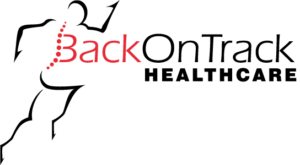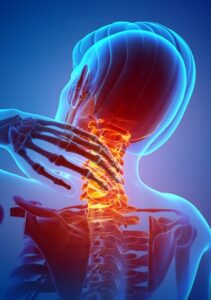Cranial Osteopathy (Craniosacral therapy) is a very gentle speciality within Osteopathy, which is particularly useful for the treatment of children.
Cranial Osteopathy can be helpful if a child has had a difficult birth or for those “unsettled” babies and children. Cranial Osteopathy works with the body’s involuntary mechanisms, helping to restore a calming balance to natural biorhythms by means of gentle massage of the child’s skull.
Cranial Osteopathy
Cranial osteopathy is a very gentle and subtle treatment, which seeks to encourage the release of stresses and tensions throughout the body.
Although gentle, cranial treatment is extremely effective and may be used in a wide range of conditions for people of all ages, from babies to the elderly.
What is the Involuntary Motion (The Cranial Rhythm)
The Involuntary Mechanism or the Cranial Rhythm is a rhythmical shape change that is present in all body tissues, which can be felt by cranial osteopaths. The movement was first described in the early 1900’s by Dr. William G. Sutherland and its existence was confirmed in a series of laboratory tests in the 1960’s and ’70’s. It is very subtle and can take many years training before the osteopath becomes proficient at detecting it. Tensions within the body can disrupt the cranial rhythm.
Accumulation of stress and strain in the body
It is common for us to feel that when we experience physical or emotional stress, our body tissues tend to tighten up. Although our bodies are generally able to adapt to stress at the time, a lasting strain may remain. Any remaining tension may be held in the body and can restrict its free movement. As time goes by, the body may find it more and more difficult to cope with accumulated stresses and eventually symptoms may develop.
What can cranial osteopaths treat?
While it can be highly effective at relieving symptoms cranial osteopathy aims to treat the whole person not just the condition, so a very wide range of situations may benefit from treatment.
In babies and children many of the usual problems of infancy and childhood may be helped.
Cranial Osteopathy for Babies and Children
In a research study conducted by Clive Hayden into the effects of cranial osteopathic treatment on babies, some parents perceived the following changes in their children’s behaviour:
- Reduced colicky crying,
- improved sleep,
- less unsettled,
- less irritable behaviour
- increased quiet happy spells.
The Sutherland Institute gives a very good description of this: “Birth is one of the most stressful events of our lives. The baby is subjected to enormous forces, as the uterus pushes to expel the baby against the natural resistance of the birth canal. The baby has to turn and twist as it squeezes through the bony pelvis, on its short but highly stimulating and potentially stressful journey.
The baby’s head has the remarkable ability to absorb these stresses. In order to reduce the size of the head, the soft bones overlap, bend and warp as the baby descends. The baby’s chin is normally well tucked down towards its chest to reduce the presenting diameter of the head.
Many babies are born with odd shaped heads as a result. In the first few days, the head can usually be seen to gradually lose the extreme moulded shape, as the baby suckles, cries and yawns. However, this unmoulding process is often incomplete, especially if the birth has been difficult or was assisted with forceps or ventouse. As a result, the baby may have to live with some very uncomfortable stresses within its head and body.
Some babies cope extremely well with even quite severe retained moulding and compression, and are contented and happy. For others it is a different story. Osteopaths have some observations about how these retained compressions and stresses might affect the baby.
Compression in the bones and linings of the skull
The baby may be uncomfortable, with a constant feeling of pressure in the structures of the head. This may be made worse by the extra pressure on the head when lying down. There is more about compressions of the bones of the skull further down this page.
Pressure on nerves
Osteopaths consider that the nerves to the lips, cheeks and tongue can be affected by birth compressions. These nerves exit the base of the skull, and in the baby this area is not as well protected as it is in the adult. Baby needs these nerves and muscles to be working well in order to latch on and suckle comfortably and efficiently.
Tension in muscles and soft tissues
The tube to the stomach, the oesophagus, passes through a sheet of muscle under the ribs called the diaphragm. Stress from a difficult or fast birth can cause tension in the diaphragm, trapping wind. If the diaphragm is pulled out of shape around the oesophagus, it can compromise the ability of the stomach to retain its contents. Any strain through the umbilical cord, for instance if the cord was around the baby’s neck, can add to strains in the abdomen.
General level of tension
Stress in pregnancy and during birth contribute to the general level of tension of the baby, and can keep the baby’s nervous system in a persistently alert state. This can occur with either a difficult, or a very quick birth- the baby may find it difficult to relax fully and may have difficulty sleeping.
There is a theory that if the baby is in a persistently alert state, it’s digestion can work too quickly. Milk may exit the stomach before it has had a chance to digest, and the partially digested milk enters the intestine where it may ferment and produce wind which can be uncomfortable for the baby.
In older children there is now much medical evidence that stress during pregnancy and difficult birth can lead to problems later on.
More about compressions of the bones of the skull
Physical compressions may also affect function. Osteopaths consider that the structure of the head and body has a profound affect on their functioning. Unresolved birth compressions around the base of the skull and the ears can compromise drainage of the Eustachian (Auditory) Tube and leave the ears more vulnerable to recurrent infections and glue ear.
Further forwards on the same bone that the ear sits in, one of the nerves to the eye muscles passes under a ligament. This area is sensitive to birth compressions, and if the function of this nerve is compromised, the eye on that side may have difficulty turning outwards, the situation known as strabismus or squint. Often strabismus resolves itself, or there can be other causes. Osteopaths will always ensure that your child is referred to their doctor if necessary.
The bones of the face and jaws can also be subject to birth compressions. The osteopathic view is that the bones of the face and jaws need to be free of birth compressions in order to grow to their fullest dimensions, to allow space for the teeth and avoid overcrowding or occlusion problems. If compressions affect the full development of the nasal passages, then the child may tend to breathe through the mouth. Orthodontists recognise that mouth breathing leads to the tongue not supporting the upper arch of the teeth, and the teeth may grow unevenly.
These are just a few examples of how osteopaths see the structure of the head and body affecting function.”
Cranial osteopathic treatment
Osteopathic treatment using the cranial approach is gentle, safe and effective for babies and children. Very specific, skilled, light pressure is applied where necessary to assist the natural ability of the body to release stresses and tensions.
Baby not sleeping? How can we help?
You may like to visit one of our clinics in Surrey and South West London to seek advice from one of our team of cranial osteopaths. We can usually find appointments within 24 hours of your enquiry. Our practitioners will guide you through a thorough case history to find out details of the pregnancy and labour, as well as symptoms since birth. They will ask about sleep and feeding patterns and use this information as well as some general health screening questions to determine if it is safe and appropriate for your baby to be treated using cranial osteopathy.
After a thorough physical examination of your baby, the osteopath will assess the bones of their skull and their involuntary mechanism. They will then aim to restore balance within this rhythm if indicated. Should an imbalance be detected, this can relate to irregular patterning behaviour, which commonly exhibits itself as unsettled sleep. The osteopath will therefore aim to rebalance the baby, which in turn will hopefully help the baby develop a more regular and predictable sleep pattern.
Could there be any adverse reactions?
Reactions to treatment are variable; often the baby or child is very relaxed afterwards and sleeps well. Others have a burst of energy after treatment, usually followed by a good nights sleep.
Occasionally children are unsettled after treatment. This is a temporary situation, and usually clears within 24-48 hours.
Osteopaths will always ensure that patients and their babies and children seek appropriate medical advice and treatment alongside any osteopathic treatment, and will refer patients back to their GP if a problem is not suitable for osteopathic treatment.
Our team at Chhabra Osteopathy have had extensive training in the use of cranial treatment- Emily Chhabra, Carlo Dore, Sarah Raynsford and Francesca Yates have all attended post-graduate training in this field. Emily also worked for some time at the Osteopathic Centre for Children in Harley Street, London, where she gained valuable experience, especially in the treatment of babies and young children.





